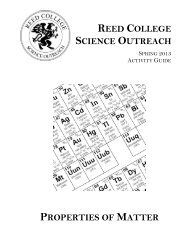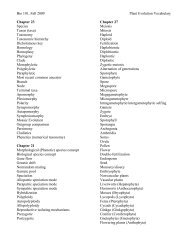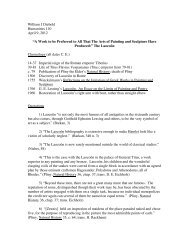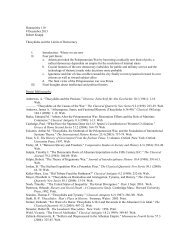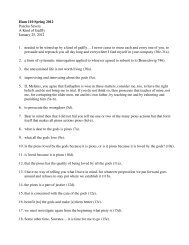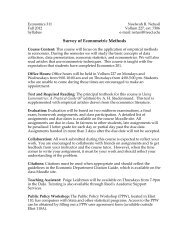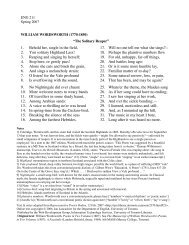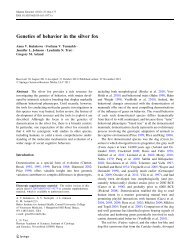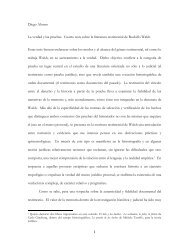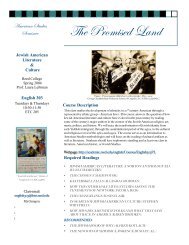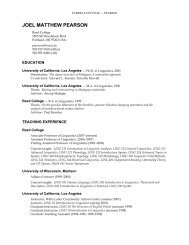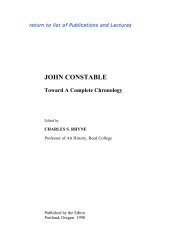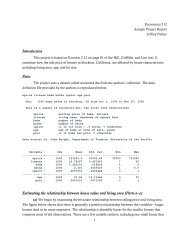Graphic and Photographic Documentation - Reed College
Graphic and Photographic Documentation - Reed College
Graphic and Photographic Documentation - Reed College
Create successful ePaper yourself
Turn your PDF publications into a flip-book with our unique Google optimized e-Paper software.
The authors provide a rare <strong>and</strong> valuable review of types of imaging used in the<br />
documentation of Maya sculpture. They first describe a few of the early attempts to<br />
record Maya sculpture. They write that Stephens <strong>and</strong> Catherwood succeeded in<br />
accumulating a record of extraordinary excellence”, but add that “Catherwood’s<br />
drawings are by no means adequate for modern studies, <strong>and</strong> today they are to be<br />
valued mostly for their antiquarian charm <strong>and</strong> as works of art in their own right”. They<br />
fail to mention the importance of Catherwood’s drawings as records of the state of<br />
Maya ruins in 1839 <strong>and</strong> 1841; Graham <strong>and</strong> Fitch especially praise A. P. Maudslay as<br />
“[laying] the foundations for modern studies of Maya art <strong>and</strong> epigraphy”. Maudslay’s<br />
“drawings were prepared on the basis of photographs, casts, <strong>and</strong> field notes, <strong>and</strong> then<br />
were often checked against the originals in the field”. The authors write that<br />
“regrettably the superlative st<strong>and</strong>ards of Maudslay were not emulated in subsequent<br />
recording of Maya sculpture . . . Fortunately, however, recent years witness a renewed<br />
effort at careful <strong>and</strong> painstaking photography <strong>and</strong> drawing of Maya monuments, as in<br />
the work of the University Museum’s Tikal project <strong>and</strong> the Maya text recording project<br />
of Ian Graham under auspices of Peabody Museum, Harvard” (quotations on pp. 41<br />
<strong>and</strong> 42).<br />
Graham <strong>and</strong> Fitch note that John H. Denison was the first to apply the technique of<br />
rubbings in Maya field studies, but that “only in recent years a significant <strong>and</strong> large<br />
scale effort to record Maya sculpture with an advanced rubbing process has been<br />
initiated by Merle Greene Robertson. The authors are exceptional in observing that<br />
“clearly depending in no small degree upon the artistic sensitivity of Mrs. Robertson,<br />
an invaluable an amazingly successful evocation of the original qualities of the<br />
sculpture” has emerged (p. 43).<br />
In another rarely noted observation, in this case about line drawings, Graham <strong>and</strong><br />
Fitch write that “literal line drawings, even when attaining a high <strong>and</strong> commendable<br />
level of accuracy <strong>and</strong> thus being invaluable for iconographic <strong>and</strong> similar inquiries, are<br />
seldom useful or even useable for purposes of critical or esthetic studies. The problem<br />
of sensitive <strong>and</strong> effective translation from the three dimensions of relief or sculpture to<br />
the two dimensions of drawing are almost insurmountable in simple, direct line<br />
drawing” (p. 43).<br />
The last 2-1/2 pages describe the nature <strong>and</strong> importance of photogrammetry as a<br />
“method of easily recording Maya sculpture in such a manner that casts can always be<br />
made when needed <strong>and</strong> which has negligible requirements of space for storage” (p.<br />
44). Unfortunately, they repeat the common claim that in photography “from this<br />
stereoscopic pair of photographs all the three dimensional information of the subject<br />
can be obtained” (p. 44). In a 1-1/2 page appendix, the authors describe how a<br />
contour map or a contoured plaster replica can be generated from the stereo pair of<br />
photographs.<br />
Greene, Merle (see also Robertson, Merle Greene)<br />
Ancient Maya Relief Sculpture. Rubbings by Merle Greene. Introduction <strong>and</strong> notes by J.<br />
Eric S. Thompson. New York: Museum of Primitive Art, 1967 (unpaged).<br />
30



